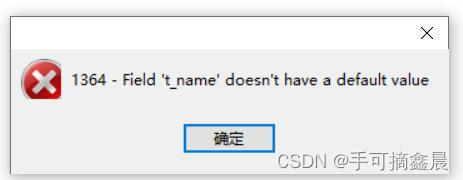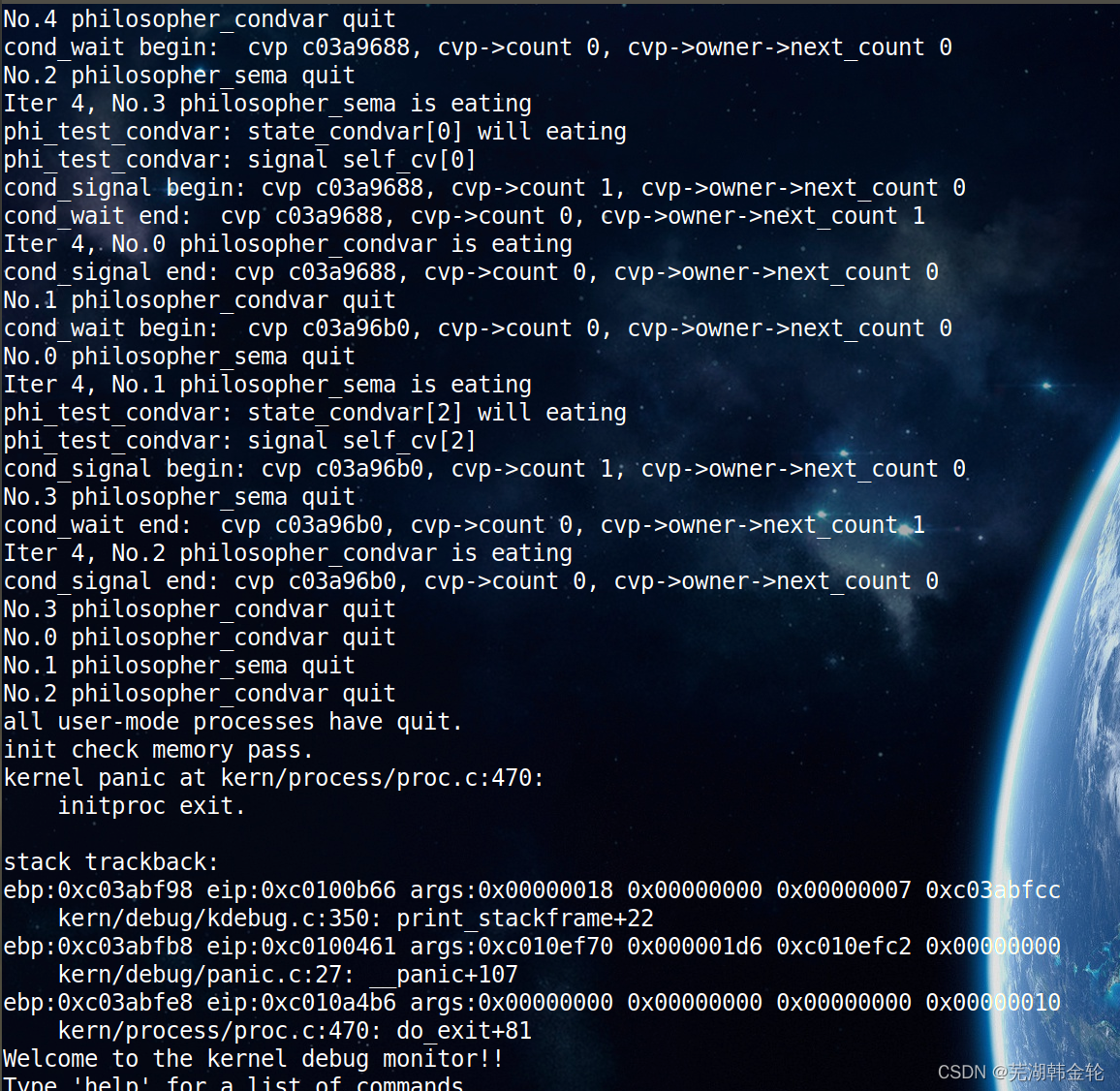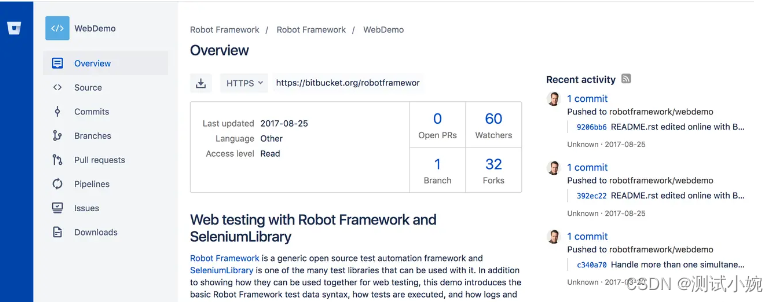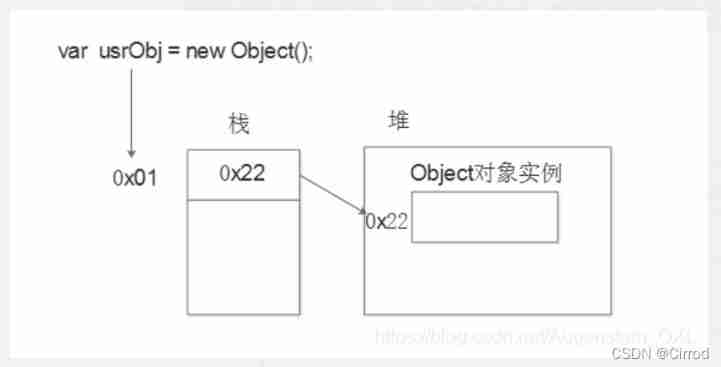当前位置:网站首页>学习记录:STM32F103 时钟系统概述工作原理
学习记录:STM32F103 时钟系统概述工作原理
2022-07-06 09:25:00 【Bitter tea seeds】
目录
前言
想要运用好一款单片机必须要知道微控制器原理性的东西,这样在对它进行应用的时候,才能得心应手明白它如何进行的工作。项目出问题时,也能在底层找到问题的源头和解决方案。STM32的时钟系统比51单片机的时钟系统要复杂很多,毕竟51单片机只有一个时钟系统。
从STM32参考手册上,我了解到STM32F103MCU有三种不同的时钟源可被用来驱动系统时钟(SYSCLK): HSI振荡器时钟 、HSE振荡器时钟 、PLL时钟。当不被使用时,任一个时钟源都可被独立地启动或关闭,由此优化系统功耗。
所以能够知道, STM32采取多种时钟源是为了减少时钟的功耗,在数字电子技术中:同一个电路,时钟越快它消耗的功率就越大,并且抗电磁场的干扰能力也就越弱,脉冲越不稳定。
一、看如下时钟树我们能发现STM32有5个时钟源
(参考正点原子的开发指南)
ⅰ、HSI 是高速内部时钟,RC 振荡器(在Multisim专栏里,对文氏桥电路进行了仿真,想详细了解可以去看一看),频率为 8MHz。
ⅱ、HSE 是高速外部时钟,可接石英/陶瓷谐振器(在Multisim专栏里,对石英晶体电路进行了仿真,想详细了解可以去看一看),或者接外部时钟源,频率范围为4MHz~16MHz。
ⅲ、LSI 是低速内部时钟,RC 振荡器,频率为 40kHz。独立看门狗的时钟源只能是 LSI,同 时 LSI 还可以作为 RTC 的时钟源。
ⅳ、LSE 是低速外部时钟,接频率为 32.768kHz 的石英晶体。这个主要是 RTC 的时钟源。
ⅴ、PLL 为锁相环倍频输出,其时钟输入源可选择为 HSI/2、HSE 或者 HSE/2。倍频可选择为 2~16 倍,但是其输出频率最大不得超过 72MHz。

①、MCO 是 STM32 的一个时钟输出 IO(PA8),它可以选择一个时钟信号输出,可以选择为 PLL 输出的 2 分频、HSI、HSE或者系统时钟。这个时钟可以用来给外部其他系统提供时钟源。
②、 这里是 RTC 时钟源,从图上可以看出,RTC 的时钟源可以选择 LSI,LSE,以及 HSE 的 128 分频。
③、从图中可以看出 USB 的时钟是来自 PLL 时钟源。STM32 中有一个全速功能 的 USB 模块,其串行接口引擎需要一个频率为 48MHz 的时钟源。该时钟源只能从 PLL 输出端获取,可以选择为 1.5 分频或者 1 分频,也就是,当需要使用 USB 模块时,PLL 必须使能,并且时钟频率配置为 48MHz 或 72MHz。
④、 STM32 的系统时钟 SYSCLK,它是供 STM32 中绝大部分部件工作的时钟源。系统时钟可选择为 PLL 输出、HSI 或者 HSE。系统时钟最大频率为 72MHz, 当然你也可以超频,不过一般情况为了系统稳定性是没有必要冒风险去超频的。
⑤、是指其他所有外设了。从时钟图上可以看出,其他所有外设的时钟最终来源都是 SYSCLK。SYSCLK 通过 AHB 分频器分频后送给各模块使用。这些模块包括:
1、AHB 总线、内核、内存和 DMA 使用的 HCLK 时钟。
2、通过 8 分频后送给 Cortex 的系统定时器时钟,也就是 systick 。
3、直接送给 Cortex 的空闲运行时钟 FCLK。
4、送给 APB1 分频器。APB1 分频器输出一路供 APB1外设使用(PCLK1,最大频率 36MHz),另一路送给定时器(Timer)2、3、4 倍频器使用。
5、送给 APB2分频器。APB2分频器分频输出一路供 APB2 外设使用(PCLK2:最大频率 72MHz),另一路给定时器(Timer)1倍频器使用。
APB1 上面连接的是低速外设,包括电源接口、 备份接口、CAN、USB、I2C1、I2C2、UART2、UART3 等等,APB2 上面连接的是高速外设包 括 UART1、SPI1、Timer1、ADC1、ADC2、所有普通 IO 口(PA~PE)、第二功能 IO 口等。
二、 STM32F103 时钟系统配置
(都是根据STM32的寄存器进行编程的)
typedef struct /*寄存器*/
{
__IO uint32_t CR; //HSI,HSE,CSS,PLL等的使能和就绪标志位
__IO uint32_t CFGR; //PLL等的时钟源选择,分频系数设定
__IO uint32_t CIR; // 清除/使能 时钟就绪中断
__IO uint32_t APB2RSTR; //APB2线上外设复位寄存器
__IO uint32_t APB1RSTR; //APB1线上外设复位寄存器
__IO uint32_t AHBENR; //DMA,SDIO等时钟使能
__IO uint32_t APB2ENR; //APB2线上外设时钟使能
__IO uint32_t APB1ENR; //APB1线上外设时钟使能
__IO uint32_t BDCR; //备份域控制寄存器
__IO uint32_t CSR; //控制状态寄存器
} RCC_TypeDef;
1.SystemInit 初始化程序:
void SystemInit (void)
{
/* Reset the RCC clock configuration to the default reset state(for debug purpose) */
/* Set HSION bit */
RCC->CR |= (uint32_t)0x00000001; //打开 HSION 位
/* Reset SW, HPRE, PPRE1, PPRE2, ADCPRE and MCO bits */
#ifndef STM32F10X_CL
RCC->CFGR &= (uint32_t)0xF8FF0000;
#else
RCC->CFGR &= (uint32_t)0xF0FF0000;
#endif /* STM32F10X_CL */
/* Reset HSEON, CSSON and PLLON bits */
RCC->CR &= (uint32_t)0xFEF6FFFF;// 复位 HSEON, CSSON 和 PLLON 位
/* Reset HSEBYP bit */
RCC->CR &= (uint32_t)0xFFFBFFFF; // 复位 HSEBYP 位
/* Reset PLLSRC, PLLXTPRE, PLLMUL and USBPRE/OTGFSPRE bits */
RCC->CFGR &= (uint32_t)0xFF80FFFF;//复位 CFGR 寄存器
#ifdef STM32F10X_CL
/* Reset PLL2ON and PLL3ON bits */
RCC->CR &= (uint32_t)0xEBFFFFFF;
/* Disable all interrupts and clear pending bits */
RCC->CIR = 0x00FF0000;
/* Reset CFGR2 register */
RCC->CFGR2 = 0x00000000;
#elif defined (STM32F10X_LD_VL) || defined (STM32F10X_MD_VL) || (defined STM32F10X_HD_VL)
/* Disable all interrupts and clear pending bits */
RCC->CIR = 0x009F0000;
/* Reset CFGR2 register */
RCC->CFGR2 = 0x00000000;
#else
/* Disable all interrupts and clear pending bits */
RCC->CIR = 0x009F0000;
#endif /* STM32F10X_CL */
#if defined (STM32F10X_HD) || (defined STM32F10X_XL) || (defined STM32F10X_HD_VL)
#ifdef DATA_IN_ExtSRAM
SystemInit_ExtMemCtl();
#endif /* DATA_IN_ExtSRAM */
#endif
/* Configure the System clock frequency, HCLK, PCLK2 and PCLK1 prescalers */
/* Configure the Flash Latency cycles and enable prefetch buffer */
SetSysClock();
#ifdef VECT_TAB_SRAM
SCB->VTOR = SRAM_BASE | VECT_TAB_OFFSET; /* Vector Table Relocation in Internal SRAM. */
#else
SCB->VTOR = FLASH_BASE | VECT_TAB_OFFSET; /* Vector Table Relocation in Internal FLASH. */
#endif
}SystemInit 主要做了如下三个方面工作: 1) 复位 RCC 时钟配置为默认复位值(默认开始了 HIS) 2) 外部存储器配置 3) 中断向量表地址配置。
2.SetSysClockTo72
将系统时钟频率设置为 72MHz 并配置 HCLK、PCLK2和 PCLK1 预分频器。
初始化之后的状态:
SYSCLK 72MHz
AHB 72MHz
PCLK1 36MHz
PCLK2 72MHz
PLL 72MHz
初始化之后可以通过变量SystemCoreClock获取系统变量。如果SYSCLK=72MHz,那么变量SystemCoreClock=72000000。
static void SetSysClockTo72(void)
{
__IO uint32_t StartUpCounter = 0, HSEStatus = 0;
/* SYSCLK, HCLK, PCLK2 and PCLK1 configuration ---------------------------*/
/* Enable HSE */
RCC->CR |= ((uint32_t)RCC_CR_HSEON);
/* Wait till HSE is ready and if Time out is reached exit */
do
{
HSEStatus = RCC->CR & RCC_CR_HSERDY;
StartUpCounter++;
} while((HSEStatus == 0) && (StartUpCounter != HSE_STARTUP_TIMEOUT));
if ((RCC->CR & RCC_CR_HSERDY) != RESET)
{
HSEStatus = (uint32_t)0x01;
}
else
{
HSEStatus = (uint32_t)0x00;
}
if (HSEStatus == (uint32_t)0x01)
{
/* Enable Prefetch Buffer */
FLASH->ACR |= FLASH_ACR_PRFTBE;
/* Flash 2 wait state */
FLASH->ACR &= (uint32_t)((uint32_t)~FLASH_ACR_LATENCY);
FLASH->ACR |= (uint32_t)FLASH_ACR_LATENCY_2;
/* HCLK = SYSCLK */
RCC->CFGR |= (uint32_t)RCC_CFGR_HPRE_DIV1;
/* PCLK2 = HCLK */
RCC->CFGR |= (uint32_t)RCC_CFGR_PPRE2_DIV1;
/* PCLK1 = HCLK */
RCC->CFGR |= (uint32_t)RCC_CFGR_PPRE1_DIV2;//HCLK2分频
#ifdef STM32F10X_CL
/* Configure PLLs ------------------------------------------------------*/
/* PLL2 configuration: PLL2CLK = (HSE / 5) * 8 = 40 MHz */
/* PREDIV1 configuration: PREDIV1CLK = PLL2 / 5 = 8 MHz */
RCC->CFGR2 &= (uint32_t)~(RCC_CFGR2_PREDIV2 | RCC_CFGR2_PLL2MUL |
RCC_CFGR2_PREDIV1 | RCC_CFGR2_PREDIV1SRC);
RCC->CFGR2 |= (uint32_t)(RCC_CFGR2_PREDIV2_DIV5 | RCC_CFGR2_PLL2MUL8 |
RCC_CFGR2_PREDIV1SRC_PLL2 | RCC_CFGR2_PREDIV1_DIV5);
/* Enable PLL2 */
RCC->CR |= RCC_CR_PLL2ON;
/* Wait till PLL2 is ready */
while((RCC->CR & RCC_CR_PLL2RDY) == 0)
{
}
/* PLL configuration: PLLCLK = PREDIV1 * 9 = 72 MHz */
RCC->CFGR &= (uint32_t)~(RCC_CFGR_PLLXTPRE | RCC_CFGR_PLLSRC | RCC_CFGR_PLLMULL);
RCC->CFGR |= (uint32_t)(RCC_CFGR_PLLXTPRE_PREDIV1 | RCC_CFGR_PLLSRC_PREDIV1 |
RCC_CFGR_PLLMULL9);
#else
/* PLL configuration: PLLCLK = HSE * 9 = 72 MHz */
RCC->CFGR &= (uint32_t)((uint32_t)~(RCC_CFGR_PLLSRC | RCC_CFGR_PLLXTPRE |
RCC_CFGR_PLLMULL));
RCC->CFGR |= (uint32_t)(RCC_CFGR_PLLSRC_HSE | RCC_CFGR_PLLMULL9);
#endif /* STM32F10X_CL */
/* Enable PLL */
RCC->CR |= RCC_CR_PLLON;
/* Wait till PLL is ready */
while((RCC->CR & RCC_CR_PLLRDY) == 0)
{
}
/* Select PLL as system clock source */
RCC->CFGR &= (uint32_t)((uint32_t)~(RCC_CFGR_SW));
RCC->CFGR |= (uint32_t)RCC_CFGR_SW_PLL;
/* Wait till PLL is used as system clock source */
while ((RCC->CFGR & (uint32_t)RCC_CFGR_SWS) != (uint32_t)0x08)
{
}
}
else
{ /* If HSE fails to start-up, the application will have wrong clock
configuration. User can add here some code to deal with this error */
}
}SetSysClockTo72 将系统时钟频率设置为 72MHz 并配置 HCLK、PCLK2和 PCLK1 预分频器。
主要通过查询STM32中文参考手册,找到相应的寄存器,明白各个代码的作用。
边栏推荐
- UCORE lab2 physical memory management experiment report
- The wechat red envelope cover designed by the object is free! 16888
- Emqtt distribution cluster and node bridge construction
- ucore lab7
- Leetcode notes - dynamic planning -day7
- Mysql的事务
- Take you to use wxpy to create your own chat robot (plus wechat interface basic data visualization)
- Pedestrian re identification (Reid) - data set description market-1501
- 软件测试方法有哪些?带你看点不一样的东西
- 软件测试面试回答技巧
猜你喜欢

China's county life record: go upstairs to the Internet, go downstairs' code the Great Wall '

MySQL数据库(一)

UCORE lab7 synchronous mutual exclusion experiment report

几款开源自动化测试框架优缺点对比你知道吗?

JS --- all knowledge of JS objects and built-in objects (III)

FSM和i2c实验报告

LeetCode#62. Different paths
![Cadence physical library lef file syntax learning [continuous update]](/img/0b/75a4ac2649508857468d9b37703a27.jpg)
Cadence physical library lef file syntax learning [continuous update]

Stm32 dossiers d'apprentissage: saisie des applications
Do you know the performance testing terms to be asked in the software testing interview?
随机推荐
Portapack application development tutorial (XVII) nRF24L01 launch B
JS --- BOM details of JS (V)
Thinking about three cups of tea
ucorelab3
What to do when programmers don't modify bugs? I teach you
Practical cases, hand-in-hand teaching you to build e-commerce user portraits | with code
软件测试面试要问的性能测试术语你知道吗?
LeetCode#62. Different paths
Stc-b learning board buzzer plays music
JS --- all knowledge of JS objects and built-in objects (III)
Leetcode notes - dynamic planning -day6
Interface test interview questions and reference answers, easy to grasp the interviewer
Lab 8 文件系统
C4D quick start tutorial - Introduction to software interface
STM32学习记录:输入捕获应用
软件测试需求分析之什么是“试纸测试”
ArrayList集合
51 lines of code, self-made TX to MySQL software!
Servlet
Knowledge that you need to know when changing to software testing
